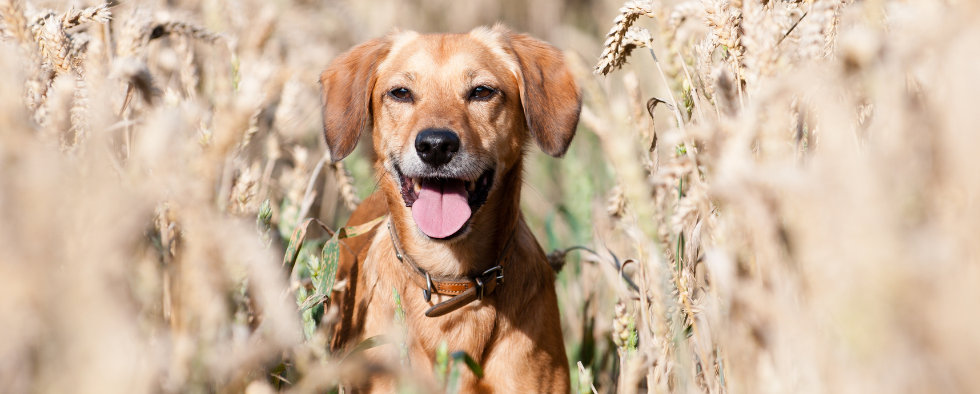As a dog owner, taking your four-legged friend for walks is one of many ways to care for them and ensure that they’re stimulated physically and mentally.
Every dog breed is likely to benefit from regular walks, but with larger, more athletic dogs you may need to take them for multiple walks each day. However, when temperatures soar in the height of summer, you may be wondering is what temperature is too hot to walk a dog, how long to walk your dog in summer, and what essentials you'll need for summer walk. In this blog we will explore all the things you need to know about hot weather walks.
Can You Walk Dogs In Hot Weather?
While it’s true that all dogs need some level of exercise, taking your pooch out on especially warm days could cause them harm, potentially leading to serious health implications or even death. But it is possible to reduce the chance of your dog becoming ill by checking the heat before you go for walks, picking suitable periods to walk your dog and providing sufficient care to your dog when you return home.
What Temperature Is Too Hot To Walk A Dog?
The maximum temperature for walking your dog may vary depending on the level of humidity and wind in the air. As a rough estimate, your dog should be safe to be walked anywhere up to 19 degrees celsius.
Out of hours animal healthcare providers Vets Now assessed the danger rating of temperature brackets, giving a four out of 10 score to 16-19 degrees celsius, outlining that it’s generally safe to walk your dog within this bracket but that owners should be wary of doing this if their dog is obese or flat-faced. For extra safety, Vets Now suggest taking your dog for a walk at times where the temperature is between 12 and 15 degrees celsius, as they saw no evidence of heat stroke from dogs that were taken for a walk in this bracket.
Is 22 Degrees Too Hot To Walk A Dog?
We’ve outlined recommended temperatures for walking your dog, but how do you know where to draw the line?
In Vets Now’s assessment of temperatures for walking your dog, they state that between 20 and 23 degrees has a six out of 10 risk rating and that rigorous exercise in this heat could lead to heatstroke. An eight out of ten rating is given for 24-27 degrees celsius and they advise that extreme caution must be taken. Obese or flat-faced dogs would be at risk in these temperatures.
A nine out of 10 risk rating is given to temperatures between 28 and 31 degrees celsius, and walks in temperatures at 32 degrees celsius or above are given a 10 out of 10 rating, with dogs of all breeds being susceptible to heatstroke at these temperatures.
When Is It Too Hot To Walk A Dog On Pavement?
Along with checking that your dog isn’t suffering as a result of high temperatures, you should also be wary of how warm the surfaces they are walking on are. When pavements have been exposed to the sun for several hours, it’s likely that they’ll be hot to the touch, and while we wouldn’t notice wearing shoes, a dog’s paws could be seriously damaged by this.
It can be hard to tell how hot a pavement is, and even if you feel it with your hand before walking your dog, it’s difficult to know whether they’ll be affected by it. Pavements can be as much as two times hotter than the air temperature. Prior to a walk, you should find out the air temperature, and if double that reading is likely to damage your dog’s paws, it could be worth waiting until it’s cooler or saving your walk for a cooler day.
How Long To Walk A Dog In Summer?
For more athletic dogs, not going for a walk may leave them restless, frustrated and upset. You might be able to get around this problem by walking your dog early in the morning or late at night when it’s cooler. However, even if you opt to take your furry friend for a walk when it’s cooler, you should still ensure that you don’t walk them for too long.
As a general rule of thumb, try to limit these excursions to under 30 minutes on warm mornings or evenings, but also take extra precautions such as not allowing your dog to run and, if they’re prone to overheating, fit them with a cooling vest.
How To Cool A Dog Down After A Walk
If your dog begins to show signs that they’re overheating, such as feeling warm to the touch, panting, dribbling more than usual or presenting a rapid heartbeat, you need to take action to prevent them from becoming seriously ill.
Tips for cooling your pooch down include:
- providing them with lots of fresh drinking water
- investing in a dog cooling mat
- giving them ice cubes to chew
- setting up a doggy paddling pool
- wrapping a wet towel around them
- leaving them in a room with cool tiled or wooden flooring.
- use a cooling bandana
How To Give Your Dog Water On A Walk
On cooler days when you do take your dog on a walk, especially on longer walks, taking water for them with you is a great idea. Travel water bottles and bowls are super handy to have to give your dog water on the go, the Beco Travel bowl and the KONG H2O Insulated water bottle are the perfect pair for this.
Our top tip is if you think it may be too hot or you are unsure, don't walk them! No dog has ever died from missing a walk but unfortunately a lot have from heatstroke. Help to keep them cool this summer with our cooling range


































































































